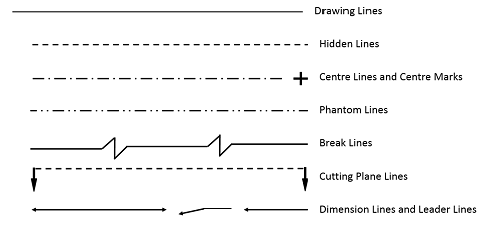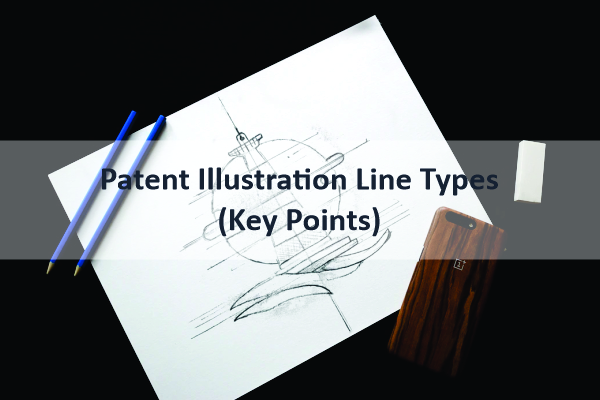Patent Illustrations are the representation of an invention in a graphical format that is submitted by a patent applicant. The most important part of the patent illustration is the illustration Line types. The United States Patent and Trademark Office (USPTO) demands the applicant to submit the most pertinent illustrations defining the uniqueness of the invention with the help of drawings made via different illustration line types.
Moreover, a perfect selection of Illustration Line Types helps to create better patent illustrations. Thus the chances to wrap up the examination process increases. Moreover, it helps to attract potential buyers.
Also Read: Major Tips to Make Complex Illustrations Easy
Patent Illustration Line Types: Major Ones
The illustration lines are the defining factor for the complete illustration. All the drawings are made with the help of different illustration lines only. An expert professional must know the actual meaning and usage of the illustration lines to create correct drawings. Moreover, you must focus on a few considerable points that actually define the fate of a patent application. Also, these help to boost your patent application:
Solid Line:
The solid lines are used to represent the claimed portion of a design patent drawing.
Hidden Lines:
Hidden lines are spotted more often in the Utility patents as compared to other patents. They are used to show the obstruction of a line by another device, embodiment, or part. These lines require disclosure for patent filing purposes. Also, they look like lines made with the help of aligning dash together. Sometimes, people confuse dashed line with the projection lines or Phantom Lines (disclaimed lines).
Phantom Line:
The Phantom lines are used to represent the disclaimed portion of a design patent drawing. A lot of people generally confuse them with the dashed line. Actually, they are the combination of dash and dots together. For example, dash-dot-dot-dash, dash-dash-dot-dash-dash, etc.
Projected Line:
Generally, the projected lines are not used in design patent drawings. Most people confuse them with the dashed lines. The Projected Lines are actually an alternate appearance of dash dot dash and so on. Moreover, they are used to represent a part of an embodiment that is detached from the body. Also, they denote the device that comes apart from another embodiment. The projected lines are mostly used in exploded images and guiding the examiner or third person on how each part connects.
NOTE: (You must use brackets while using exploded images)
Boundary Line:
The boundary line type is rarely used in design patent drawings. Generally, it is used to separate the disclaimed areas from the claimed ones. Also, the boundary lines appear as dash dot dash, just like the projection lines.
Also Read: All You Need to Know about USPTO
Illustration Line Types along with the Examples:
Patent Illustration requires a number of detailed factors. It is impossible to illustrate every part of the invention with just plain lines. Thus, different line types are used in order to illustrate every part of the invention clearly and avoid confusion. Some of the line types are:

Also Read: Patent Illustration Requirements – The Major Do’s and Don’ts
Looking for Professional Patent Illustration Experts? : Patent Illustration Express
Our experienced team at the Patent Illustration Express comprises of experts and professionals of the field. The moment you place the orders, they begin the task with all their efforts and the latest software. Our team always remains updated with the current rules about the patent illustration and provides you complete satisfaction. We serve you the most relevant outcomes and that too within a reasonable price.
Also, we work within a quick turnaround time and with long-lasting results. Moreover, the outputs are in flexible formats. To get to know more about our services, please visit the Patent Illustration Express.



